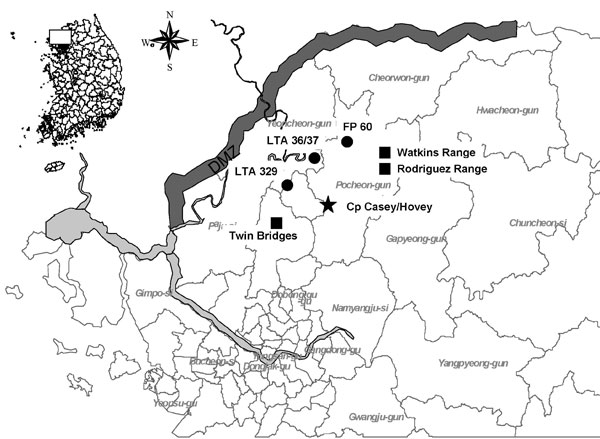Volume 15, Number 11—November 2009
Dispatch
Hemorrhagic Fever with Renal Syndrome in 4 US Soldiers, South Korea, 2005
Figure 1

Figure 1. Location of training sites where hemorrhagic fever with renal syndrome (HFRS) patients 1–4 conducted training exercises 50 days before the onset of illness. Rodent surveillance was not conducted at Watkins Range due to limited exposure. DMZ, Demilitarized Zone; LTA, local training area; solid circles, military training sites of patient 1; solid squares, military training sites of patients 2, 3, 4; star, base camp.
1Current affiliation: Centers for Disease Control and Prevention, Atlanta, Georgia, USA.
2Current affiliation: University of North Carolina at Chapel Hill, Chapel Hill, North Carolina, USA.
Page created: December 09, 2010
Page updated: December 09, 2010
Page reviewed: December 09, 2010
The conclusions, findings, and opinions expressed by authors contributing to this journal do not necessarily reflect the official position of the U.S. Department of Health and Human Services, the Public Health Service, the Centers for Disease Control and Prevention, or the authors' affiliated institutions. Use of trade names is for identification only and does not imply endorsement by any of the groups named above.